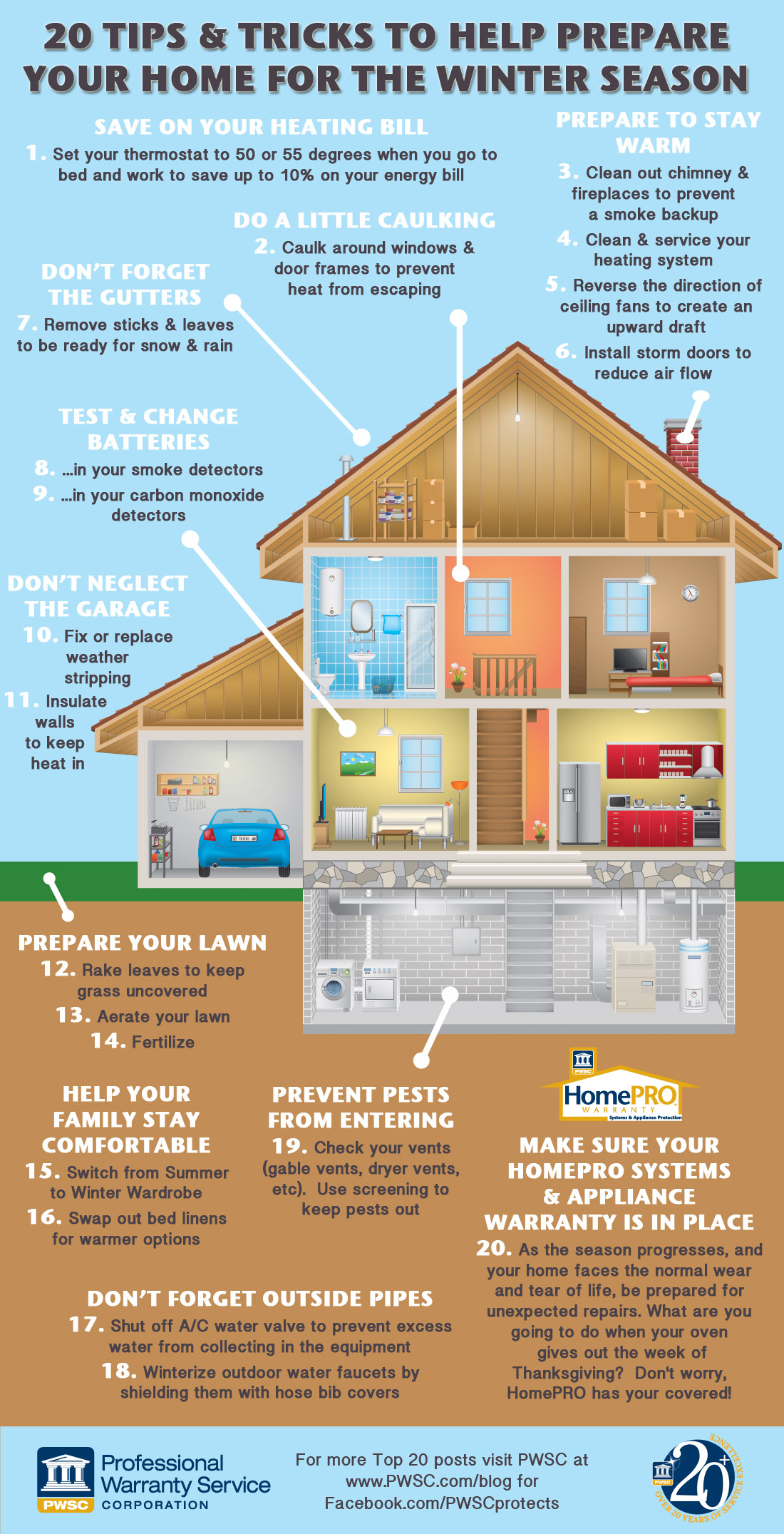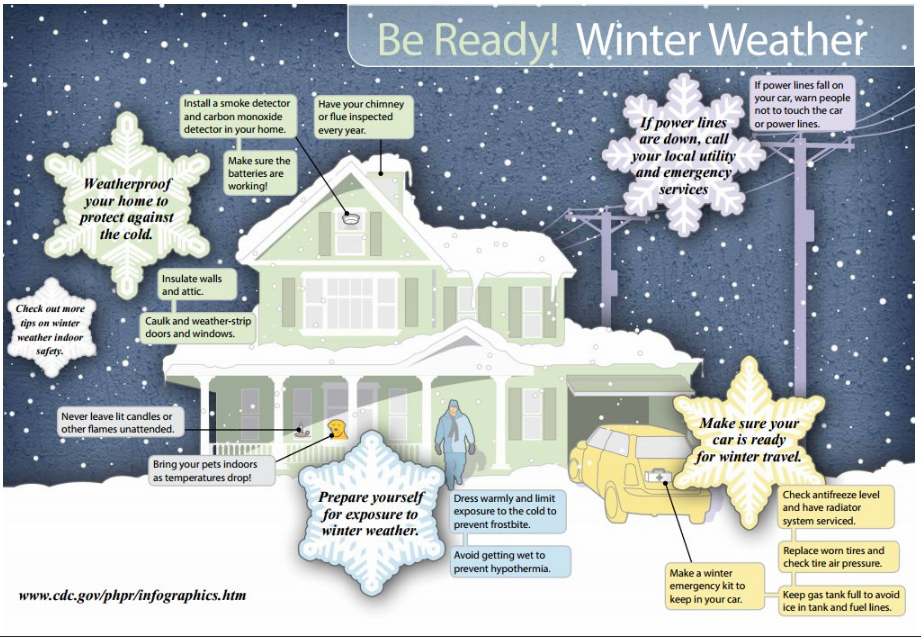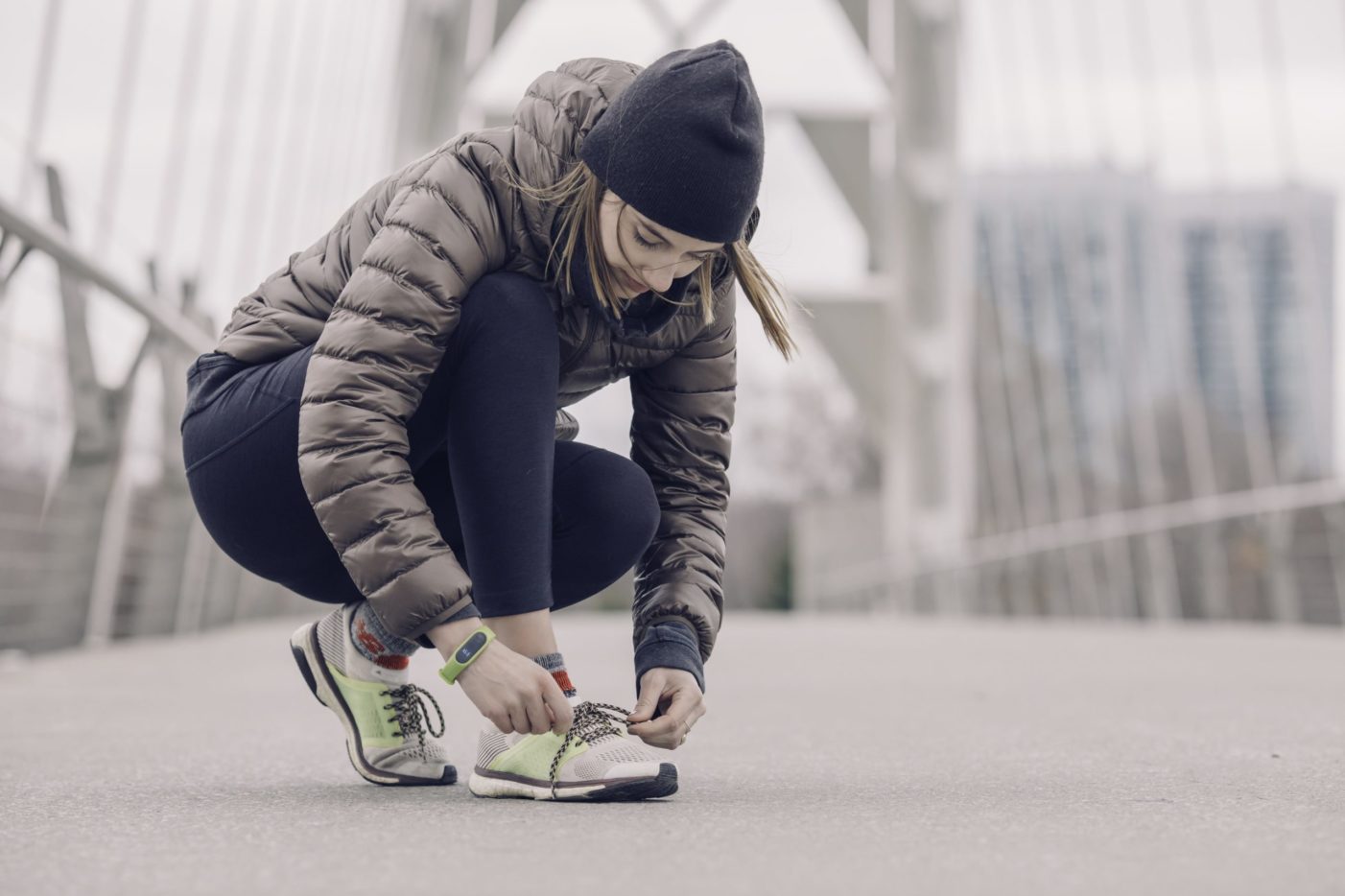Although winter may not come as a surprise, many of us may not be ready for its arrival. If you are ready for winter risk, you are more likely to be safe and healthy when temperatures start to drop.
To improve your circulation, be as active as possible. Avoid sitting stationary for lengthy periods of time by moving around at least once each hour. Even a little activity might assist in keeping you warm. When you do sit down, raise your feet since the ground is the coldest.
Consume hot beverages and foods on a daily basis, such as oatmeal, soups, and stews. More ideas for comforting, healthful dinners may be found in our recipe finder.
Maintain a temperature of 18–21°C (64–70°F) in your main living area and a minimum of 16°C (61°F) throughout the remainder of your home. If you can’t heat all of your rooms at the same time, heat the living room during the day and the bedroom right before bedtime. Use a hot water bottle or an electric blanket in bed.

How To Take Preparation for Winter
Here are the steps for your home as a preparation for a warm winter! There is no guarantee of security inside. preparation for winter. Take these steps to keep your home safe and warm during the winter months. Winter dress on Amazon
Winter is approaching, and we must prepare for the cold and hard weather. It’s that time of year again when dry skin irritates you and regular flu battles derail your winter holiday plans. Patients with colds and coughs are flooding doctors’ offices and hospitals.
It’s critical to protect oneself from the cold and maintain good health throughout the season. Though it may appear tough, there are various strategies to protect common illnesses from infecting your family.
Here are some tips for your preparation for winter!
1. Make your home in winter
- Install weather stripping, insulation, and storm windows.
- Insulate water lines that run along the exterior walls.
- Clean drainage and repair roof leaks.
- Check your heating systems.
- Serve your heating system professionally so that it is clean, well-worked, and ventilated.
- Inspect and clean the fireplace and chimneys.
- If you do not have a smoke detector, install one. Check the batteries monthly and replace them twice a year.
- There is a safe alternative heating source and alternative fuel available.
- Prevent carbon monoxide (CO) emergencies.
- Install a CO detector to alert you to the presence of deadly, odorless, colorless gas. Check the batteries as you change your watches in the fall and spring.
- Learn the symptoms of CO poisoning: headache, dizziness, weakness, stomach upset, nausea, pain, and confusion.
2. Windows and the Art of Insulation
Picture this: a gusty winter draft infiltrating your cozy haven, not only causing discomfort but also stealthily escalating your energy bills. Such intrusions into your domestic serenity can inflate your annual energy costs by up to 20%, as per the U.S. Energy Department. The remedy? Insulate your windows with utmost diligence, and here are five budget-friendly solutions, each priced under $8, to bolster your defense against these unwelcome drafts:
- V-seal weather stripping: This pliable plastic weather stripping, adorning the window sashes, fosters uniformity in window closure, effectively thwarting drafts. (Bonus tip: It works wonders on doors too!)
- Rope caulk: Moldable and adhesive, this versatile material effortlessly fills gaps, and it can be effortlessly removed come spring.
- Shrink film: Deploy this transparent plastic film, affixed with double-sided tape, and apply heat from a hair dryer for a snug, draft-free seal, harnessing an insulating pocket of air. Rubbing alcohol aids in tape removal, safeguarding your paint.
- Nail polish: Apply a discreet layer of clear polish to conceal cracks, fortifying the glass temporarily until spring arrives for a more permanent fix.
- Draft snake: To vanquish those pesky cold drafts infiltrating from below, procure a foam-and-fabric draft snake kit. Customize the 36-inch foam tube, encase it with the washable cover, and place it on the sill, ensuring a draft-free closure.
3. Driving on the snowy roads
- Get your car ready for use in cold weather before winter arrives.
- Don’t forget your car is ready
- Get your car ready for use in cold weather before winter arrives.
- Serve the radiator and maintain the level of the antifreeze.
- Check tire treads or, if necessary, replace tires with all-weather or snow tires.
- Keep the tank full of gas to avoid ice in the tank and fuel lines.
- Use winter formulas in your windshield washer.
- If you are stuck, prepare a winter emergency kit to keep in your car.
- The kit should include:
- Cell phones, portable chargers, and extra batteries;
- Blanket;
- Food and water;
- Booster cables, flame, tire pumps, and a bag of sand or cat litter (to look for);
- Compass and map;
- Flashlights, battery-operated radios, and extra batteries;
- First aid equipment; And
- Plastic bags (for sanitation).

4. Trimming Tree Branches for Safekeeping
Imagine a wintry tempest, and the mighty tree looming ominously over your abode, its branches menacingly poised over your rooftop. This scenario could potentially unleash havoc, allowing excess moisture to infiltrate your home’s crevices. To preempt such calamities, ensure that any tree limbs or branches encroaching upon your home maintain a safe distance of at least 3 feet.
In essence, winterizing your home is a strategic investment in both comfort and fiscal prudence. By embracing these measures and addressing any issues promptly, you’ll be well-prepared to greet the winter season with open arms, snug in the knowledge that your domicile is fortified against the harshest of elements. Winter heating accessories
5. The Fireplace Facade: A Prudent Inspection
Before you embrace the warm embrace of a crackling fire, visual scrutiny of your wood-burning fireplace, both indoors and outdoors, is imperative to guarantee safety. While conducting an external examination, verify the following:
- The presence and condition of a chimney cap.
- Absence of bird nests or debris accumulation atop the cap.
- Abstaining from any tree limbs in close proximity to the chimney.
- Inspection of mortar and bricks for signs of deterioration.
- Confirmation that the chimney extends at least 2 feet beyond the roofline.
- The chimney crown’s beveled design facilitates airflow.
- Visibility of the flue liner above the chimney crown.
- Plumb alignment of the chimney, devoid of leaning.
Internally, ascertain the following:
- Proper functionality of the flue damper, ensuring it opens, closes, and seals adequately.
- Absence of combustible materials, such as animal nests or foreign objects, obstructing the flue.
- Inspection of the fireplace surround, hearth, and firebox for cracked bricks or deteriorated mortar.
Sports Apparel & Accessories·Sports, Exercise Equipment·Outdoors & Recreation·Accessories & Services. Should any damage or concerns arise during this inspection, it is prudent to engage the services of a professional fireplace and chimney inspector, with costs ranging from $79 to $500 depending on the scope of the inspection. For gas fireplaces, which require less maintenance, conduct these checks:
- Inspect glass doors for cracks or latch issues.
- Verify proper positioning of gas logs.
- Test the igniter after shutting off the gas.
- Examine the burner holes for any obstructions, using a pin or needle if necessary.
6. Equipped in advance for emergencies
Indeed, the frigid embrace of winter, accompanied by its icy clutches and blanket of snow, poses tangible threats to your sanctuary—unless you devote the necessary time to prepare it for the seasonal metamorphosis. This comprehensive checklist, meticulously curated, will not only fortify your domicile against the elements but also bestow upon it a heightened sense of comfort and warmth as the mercury takes a downward plunge.
- Be prepared for weather-related emergencies, including lightning strikes.
- Stock foods do not need any cooking or refrigeration and stored water in clean containers.
- Make sure your cell phone is fully charged.
- When planning a trip, be aware of the current and forecast weather.
- Keep an up-to-date emergency kit, including:
- Battery-powered devices, such as a flashlight, a National Oceanic and Atmospheric Administration (NOAA) weather radio, and lamps;
- Extra battery;
- First aid kits and additional medicines;
- Baby Items; And
- Cat litter or sand for icy walkways.
- Protect your family from carbon monoxide.
- Keep grill, camp stove, and generator from home, basement, and garage.
- Look for a generator at least 20 feet from the house.
- Leave the house and call 911 as soon as you hear the CO detector. Wear appropriate outerwear: light level, warm clothing; Windproof coat, mittens; Hat; Scarf; And waterproof boots.
7. The Roof: Sentinel of Dryness
Discovering a leaky roof amid the season’s first snowfall is the stuff of nightmares. A proactive roof inspection can preempt such a calamity. If you’re apprehensive about ascending to great heights, fret not; you can conduct a thorough inspection from Terra Firma using a pair of trusty binoculars.
While circumnavigating your residence, be on the lookout for telltale signs of roof distress:
- Cracked caulk or rust patches on the flashing.
- Shingles exhibiting signs of buckling, curling, or blistering.
- Missing or fractured shingles.
- Cracks and wear in the rubber boots surrounding vent pipes.
- The unwelcome presence of moss and lichen is a potential indicator of decay beneath the surface. Superficial black algae stains are primarily cosmetic in nature.
Certain roof repairs, such as shingle replacements or flashing caulkings, are feasible for DIY enthusiasts comfortable with rooftop work. However, if you harbor any doubts, it’s advisable to enlist the expertise of a professional roof inspector. The cost for a standard roof inspection typically ranges from $119 to $296.
8. Outdoor Defence
Outdoor activities can put you at a number of safety risks, but there are steps you can take in preparation for winter:
- Wear appropriate outerwear: Wear a tightly knit, wind-resistant coat or jacket; Light interior layer, warm clothing; mittens; Hat; Scarf; And waterproof boots.
- Sprinkle cat litter or sand on icy patches.
- Follow safety precautions when leaving.
- Work slowly while working outside.
- Take a friend and an emergency kit while you are outdoors.
- Carry a cell phone.

9. Gutter Wisdom: Keeping the Waters at Bay
Clogged rain gutters and downspouts spell trouble, potentially damaging your home’s foundation or instigating ice dams that herald costly repairs. Thus, once the leaves have fallen, undertake the vital task of cleaning your gutters, expunging them of leaves, twigs, and accumulated debris. Moreover, ensure your gutters remain free of sagging and water entrapment, securing gutter hangers and downspout brackets as needed, and replacing any worn or damaged components promptly.
10. Extra care for kids and senior citizens
Be prepared to examine families and neighbors who are especially vulnerable to the dangers as preparation for winter. Take care of the seniors and kids in the following areas:
- Wear extra layers of clothing to stay warm.
- Maintain hydration.
- Make use of sunscreen.
- Encourage them to exercise on a regular basis.
- Maintain a clean environment.
- Frequently moisturize
- Cold water should not be consumed.
- Baths in hot water should be avoided.
- Maintain a balanced diet.
11. When you are planning a trip
When planning a trip, be aware of the current and forecast weather as a preparation for winter.
- Avoid traveling when the weather service has issued suggestions.
- If you must travel, inform a friend or relative of your proposed route and the expected arrival time.
- If you are stuck in your car, follow these safety rules.
- Make your car visible to rescuers. Tie a brightly colored cloth to the antenna, raise the hood of the car (if it doesn’t get snowed), and turn on the overhead lights inside (when your engine is running).
- Take anything you need from the trunk to the passenger area. Stay with your car if the safety is not 100 yards away.
- Keep your body warm. Extra clothing, a blanket, or a newspaper will be useful.
- Rotate your arms and legs to improve circulation and stay warm.
- Run the motor (and heater) for about 10 minutes every hour, slightly opening a window to allow it to operate.
- Make sure the snow does not block the drainage pipe – it will reduce the risk of carbon monoxide poisoning.
12. Ensure You Have Backup Heating Options
The joy of returning to a warm and cozy haven after a long day is unparalleled. However, the prospect of a malfunctioning heating system on a chilly evening is a scenario best avoided.
To preempt such discomfort, it’s prudent to have alternative heating sources readily available. Consider options like space heaters, hot fan/heaters, wood stoves, or gas heaters. Personally, I cherish my trusty space heater, a faithful companion in my home office, rescuing me from chilly toes and legs on numerous occasions. Pregnancy dresses for women winter
13. Retrieve Your Winter Wardrobe
In the delightful shuffle of seasons, we stow away our spring/summer attire as we welcome fall/winter garb. Don’t wait until the last minute to unearth your winter wardrobe; doing so in haste can be a frigid ordeal.
Plan ahead by pulling out your warmer clothing early, sparing yourself the frantic scavenger hunt for cozy attire when the cold weather descends. I’ve lost count of the times I found myself ill-prepared for winter’s icy embrace, and it’s a sensation best avoided!
14. Gather Illumination Resources
In anticipation of potential storms or power outages, it’s wise to gather all your sources of illumination. Consider placing a sturdy flashlight with fresh batteries in each room and hallway. This ensures that in the event of an abrupt power outage, you can swiftly illuminate your surroundings.
Personally, I find candles to be both practical and mood-enhancing. However, exercise caution in candle placement, ensuring they are well within your observation.
15. Stock Up on Non-Perishables
While prudence dictates against hoarding, it’s a sound idea to keep a modest stash of non-perishable essentials, such as snacks, bottled water, and canned goods, reserved exclusively for the winter season.
In the event of a storm-induced electricity outage, having these extra supplies on hand can be a lifesaver. You never know when you might need that extra cup of hot cocoa or a comforting bowl of soup to ward off the winter chill.

16. Prepare Your Fireplace Wood
This tip is especially pertinent if you have a wood-burning fireplace. Ensure your firewood is stored in a cool, dry location for easy access when the need arises.
During the frigid and wet winter months, the ability to promptly access and use dry firewood is invaluable. A well-prepared woodpile can make the difference between a cozy evening by the fire and a cold, damp disappointment.
17. Propane and Portable Burner
For those residing in regions known for harsh winters and frequent power outages, having a propane supply and a portable burner, similar to the ones used for camping, can prove invaluable.
These resources can be used to heat water for coffee, tea, soup, or noodles when the power is down. However, exercise caution when using gas appliances; it’s safest to do so outdoors or in a well-ventilated area, such as a garage with a partially open door.
18. Acquire Ice Melt (Snow Salt)
This recommendation pertains to both your home and business premises. If you are a business owner, especially in locales where property maintenance is your responsibility, ice melt is a valuable asset.
Ice melt, or snow salt, lowers the freezing point of water, preventing the formation of treacherous black ice and breaking the bond between ice and pavement or concrete. Keeping this on hand and applying it before an impending snowstorm is a prudent measure to ensure the safety of your home, customers, clients, and staff.
19. Arrange for Snow Management Services
While the do-it-yourself spirit is commendable, when it comes to snow management, entrusting the task to professionals often yields superior and more efficient results.
Numerous companies specialize in snow management and possess the expertise and equipment to handle the job swiftly and effectively. By engaging their services, you can rest assured that your winter property maintenance is in capable hands, allowing you to enjoy the season with peace of mind. Gym. Body Fitness. Exercise. Weight Loss. Pickleball. Cardio. Balance Bike
Take away
Above all, be prepared to examine families and neighbors who are particularly vulnerable to the risk of winter weather: young children, older adults, and chronic illnesses. If you have pets, bring them inside. If you cannot bring them in, provide adequate, warm shelter and frozen water for drinking.
Layer your clothing and accessorize with a cap, gloves, and scarf. The warmest materials include wool, cotton, and fleecy fabrics. Wear warm socks and slippers when you’re inside to keep your feet warm. Draughts can be blocked by closing doors and using a keyhole cover. To keep the heat in, invest in thermal curtain linings.
Other Recommended Reading
- 35 Best Places to Visit in Delhi – Complete Travel List
- 10 Ways to Overcome Lack of Motivation to Do Anything
- How To Overcome Lack of Motivation and Depression
- 43 Definitions of Success to Completely Change Life
- 10 Answers on I Have No Motivation to Do Anything
- 10 Solutions: Neck and Shoulder Pain from Sitting at Computer
- 8 Practical Steps To Develop Strategic Thinking Skills
- 14 Critical Thinking Strategies for Challenge Takers
- 26 Tricks to Increase Brain Power to Optimum Level
- 24 Working from Home Tips to Boost Productivity
- 10 Tips on Working with Computers Health and Safety
- 17 Remedies on Back and Neck Pain from Sitting at Desk
- 21 Productivity Tips at Work to Maximize Creativity
- 25 Work-from-Home Hacks for Smart People
- Protein Shakes for Hair Growth – Apply | Pros | Cons
- 23 Best Foods to Thicken Hair for Quick Results
- 17 Awesome Egg Treatment Hacks for Hair Growth
